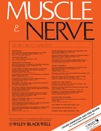 Ultrasound and MR imaging are non-invasive methods that can be performed repeatedly and without discomfort. In the assessment of neuromuscular disorders it is unknown if they hold complementary information. In this study, the authors tested this for patients with facioscapulohumeral muscular dystrophy (FSHD). Quantitative muscle ultrasound (QMUS) and quantitative MRI (QMRI) of the legs were performed in 5 men with FSHD. The correlation between QMUS determined z-scores and QMRI determined muscle fraction and T1 signal intensity (SI) was very high. QMUS had a wider dynamic range than QMRI, whereas QMRI could detect inhomogeneous distribution of pathology over the length of the muscles. Both QMUS and QMRI are well suited for imaging muscular dystrophy. The larger dynamic range of QMUS can be advantageous in follow-up of advanced disease stages, whereas QMRI seems preferable in pathologies such as FSHD that affect deep muscle layers and show inhomogeneous abnormality distributions.
Ultrasound and MR imaging are non-invasive methods that can be performed repeatedly and without discomfort. In the assessment of neuromuscular disorders it is unknown if they hold complementary information. In this study, the authors tested this for patients with facioscapulohumeral muscular dystrophy (FSHD). Quantitative muscle ultrasound (QMUS) and quantitative MRI (QMRI) of the legs were performed in 5 men with FSHD. The correlation between QMUS determined z-scores and QMRI determined muscle fraction and T1 signal intensity (SI) was very high. QMUS had a wider dynamic range than QMRI, whereas QMRI could detect inhomogeneous distribution of pathology over the length of the muscles. Both QMUS and QMRI are well suited for imaging muscular dystrophy. The larger dynamic range of QMUS can be advantageous in follow-up of advanced disease stages, whereas QMRI seems preferable in pathologies such as FSHD that affect deep muscle layers and show inhomogeneous abnormality distributions.
